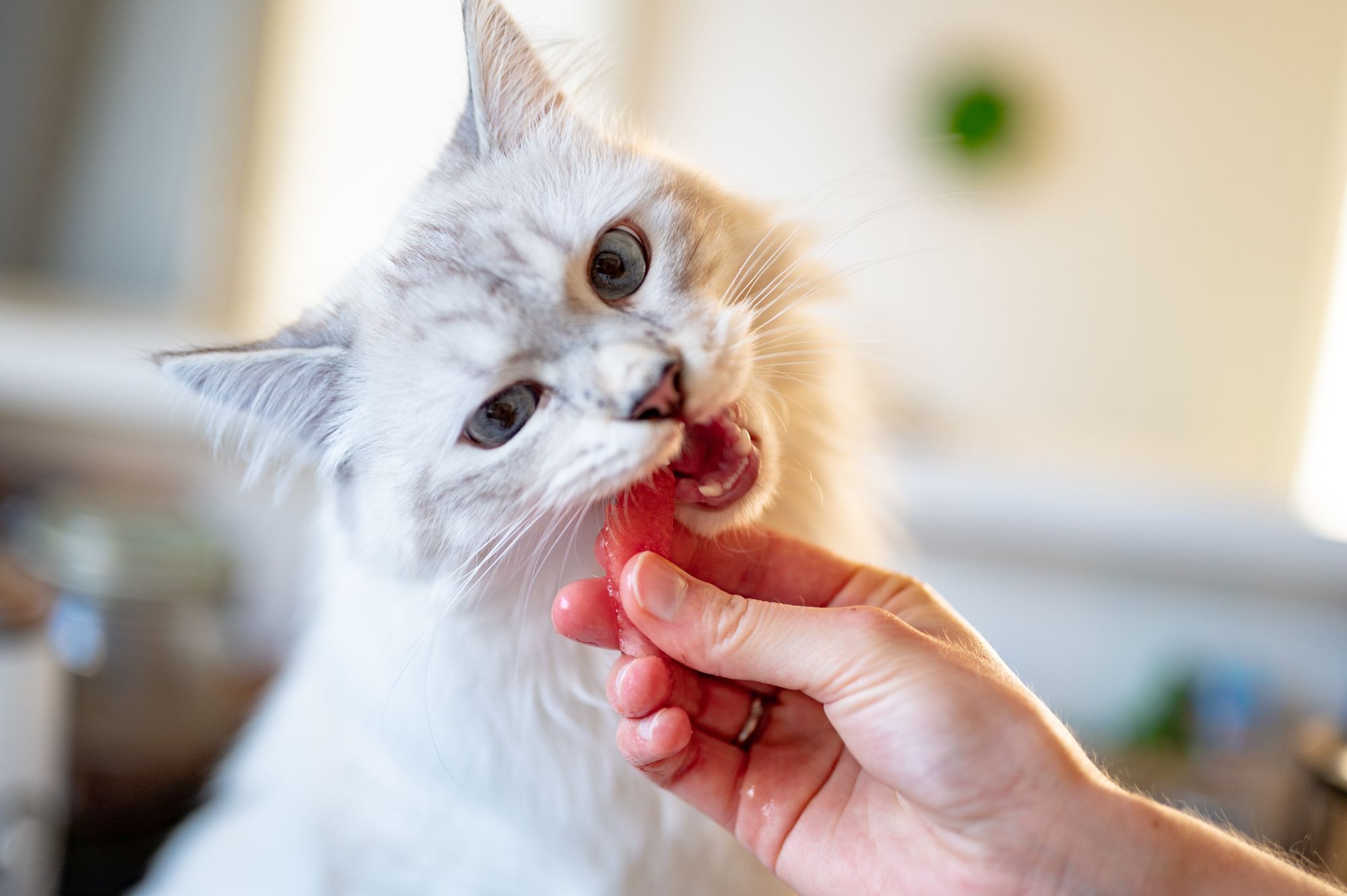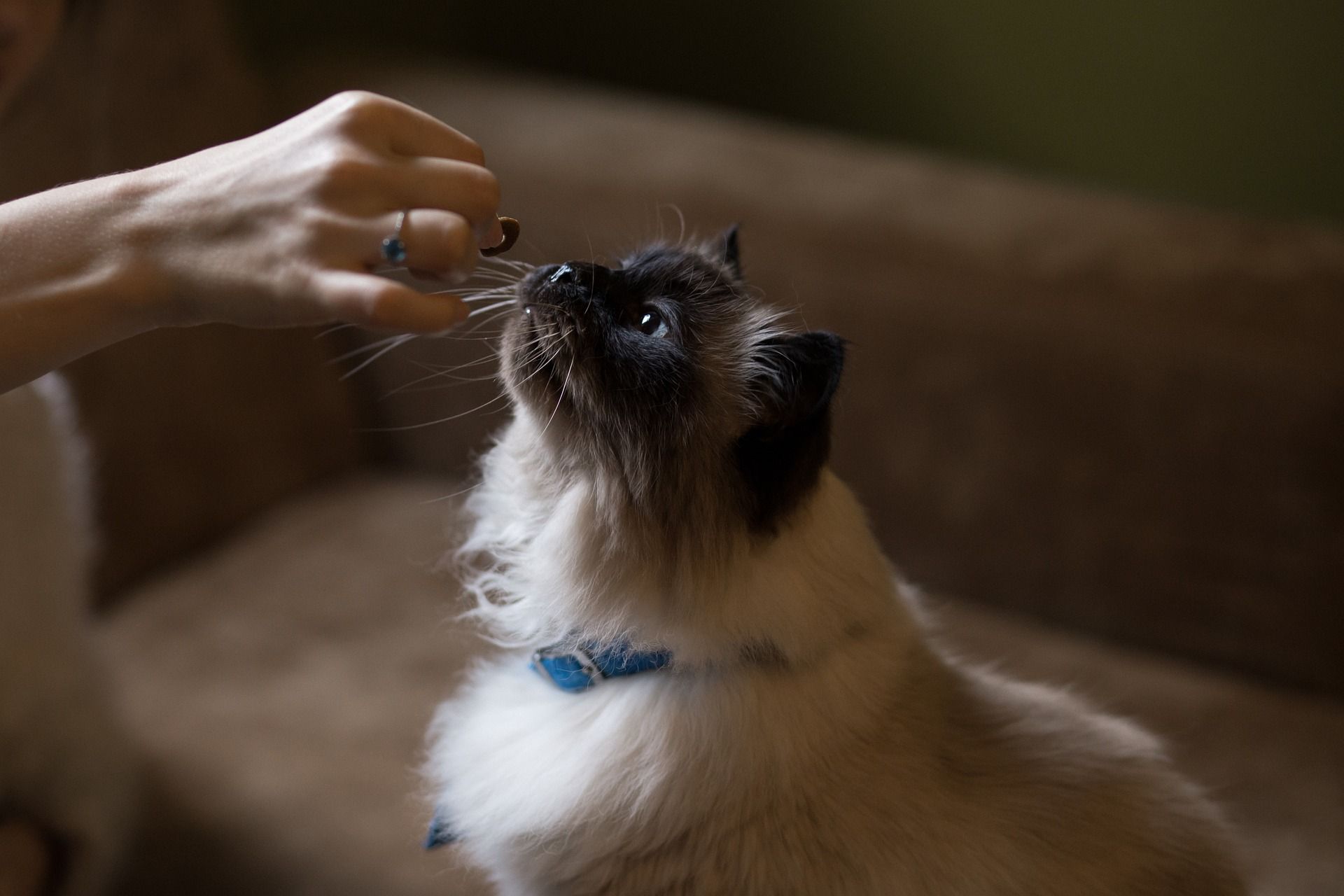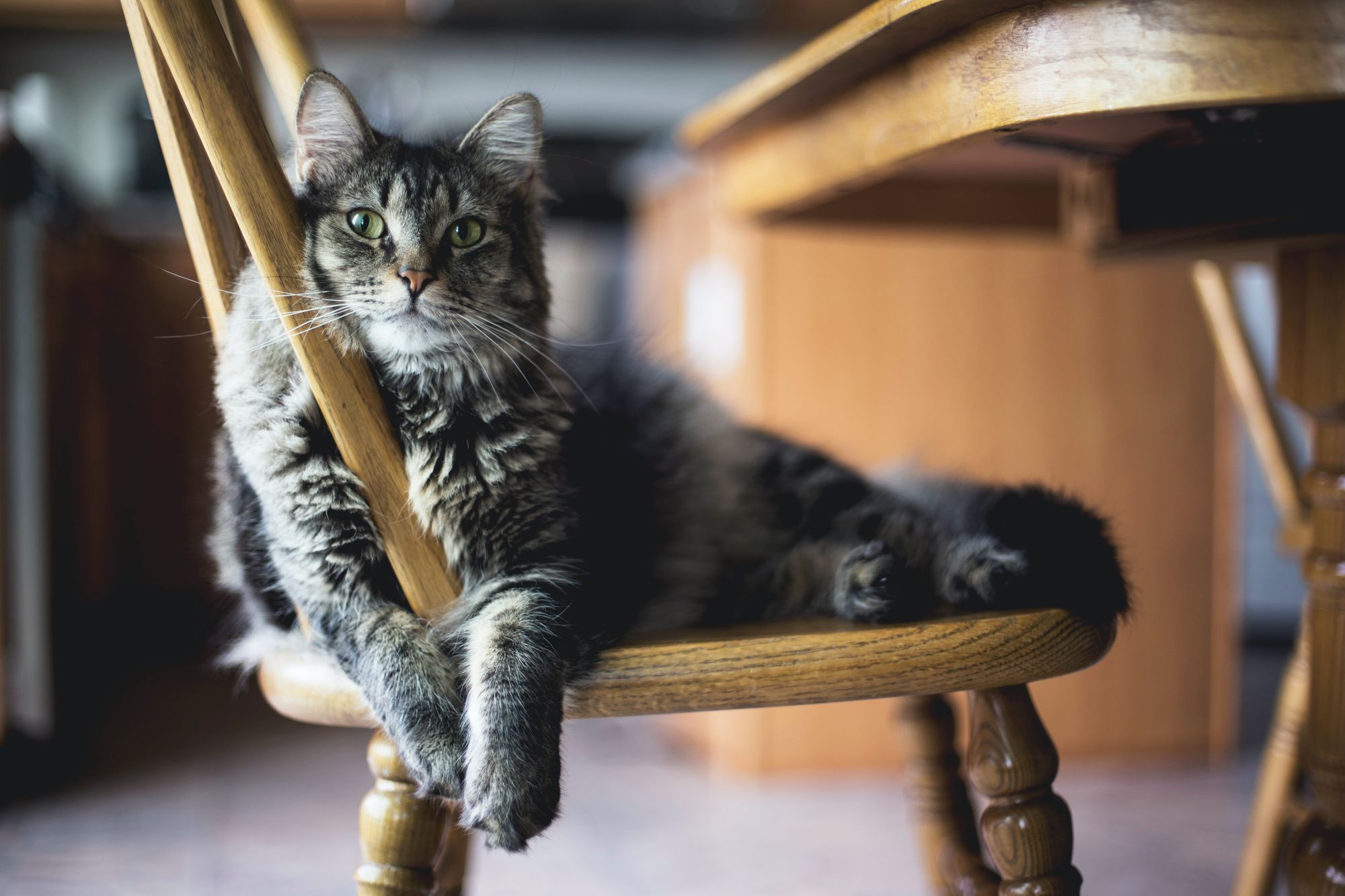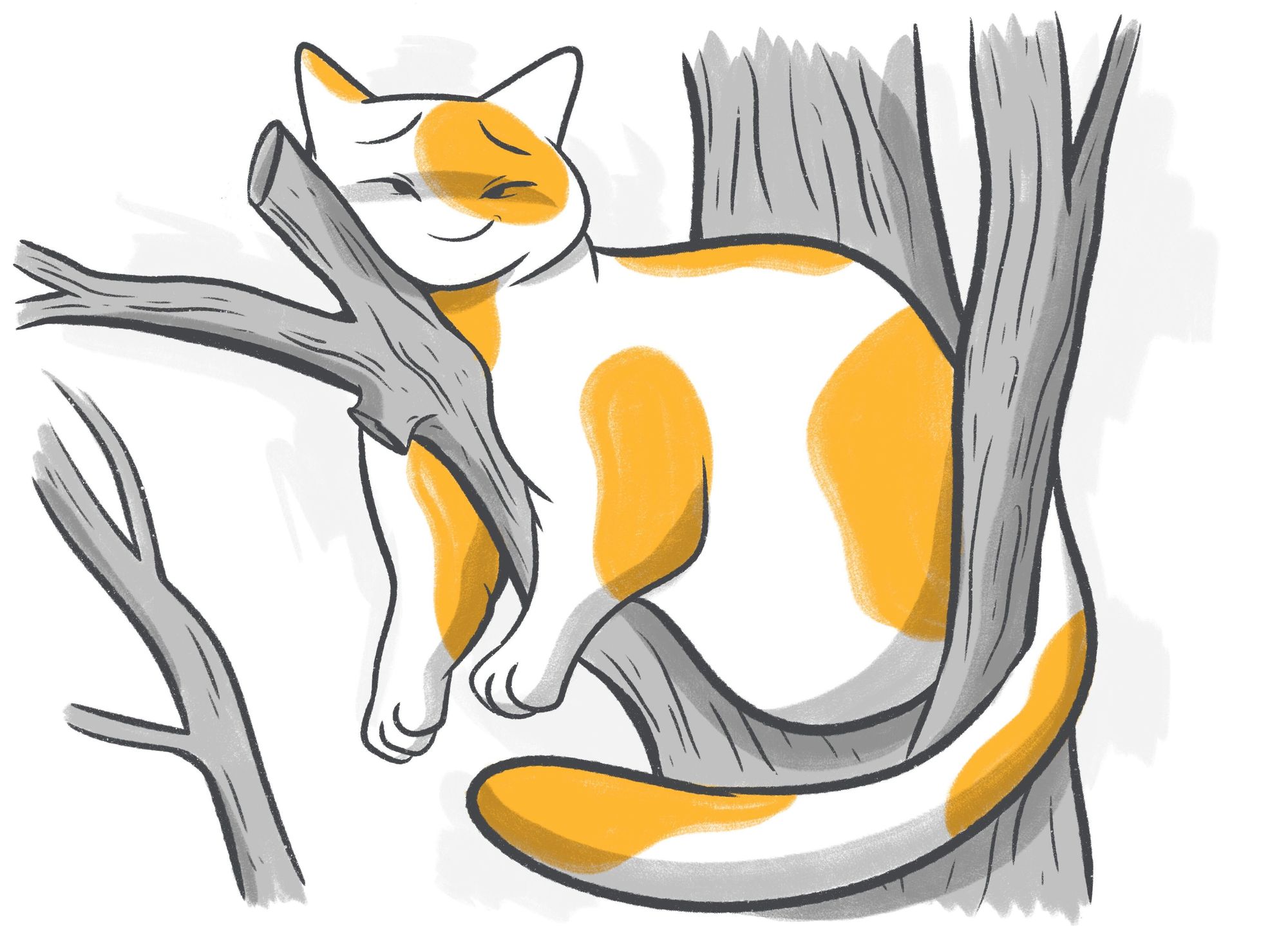Indoor cats and outdoor cats are so different in so many ways that they are barely the same species. Outdoor cats are usually lithe and muscular, but indoor cats have a tendency to be a little on the chubby side. They need different food types, have different activity levels, and even have very different health risks. Indoor cats face obesity-related conditions more than any other kind, which tells you something.
Let’s find out how much food your cat really needs and what else you need to know.
Content:
- Why Your Cat is Always Hungry
- Feeding Chart for Cats (By Weight)
- Factors that Affect How Much to Feed Your Cat
- How to Increase Activity Levels in Cats?
- How Often Should You Feed Your Cat?
- FAQ
Why Your Cat is Always Hungry

Indoor cats are always hungry because they’re bored and understimulated, for the most part. When I have nothing else to do or I’m just bored generally, the first thing I’ll do is head to the kitchen, open the cupboard, and hunt around for something to snack on. Indoor cats act in a very similar way.
Do cats get bored? Yes, they do, very easily.
Have you been overfeeding your furry friend? If you always give them more when they ask for it, they’ll continue to ask for it. Would you say no to someone who kept putting chocolate cupcakes in your hands? (I would not.)
Read more: Why Is My Cat Always Hungry?
Feeding Chart for Cats (By Weight)
Averages are hard to work out when it comes to food and cat weight because there are so many variables to factor in. You may find the following feeding chart for cats useful as a base.
Some pet food manufacturers don’t put the calorie count of their food on the packaging, but I’ve chosen a well-known American brand as an average.
You will also need to take the feeding schedule into consideration. If you feed your cat twice per day, you will need to cut the calories and food weight in half. For a 10 lb. cat, this would mean a 125-calorie meal in the morning (4 oz of food) plus a second 125-calorie (4 oz) meal later on in the day.
| Weight | Daily Calories | Wet Food (oz) |
|---|---|---|
| 1 lb. (0.45 kg) |
40 |
1 oz (38 g) |
| 2 lbs. (0.9 kg) |
65 |
2 oz (65 g) |
| 5 lbs. (2.3 kg) |
140 |
5 oz (129 g) |
| 7 lbs. (3.15 kg) |
166 |
6 oz (166 g) |
| 10 lbs. (4.5 kg) |
250 |
8 oz (216 g) |
| 15 lbs. (6.8 kg) |
325 |
10 oz (293 g) |
| 20 lbs. (9.1 kg) |
400 |
13 oz (364 g) |
| 25 lbs. (11.25 kg) |
450 |
15 oz (430 g) |
Pregnant cats will require a different feeding schedule and calorie content. Some vets suggest that you let a pregnant cat eat as much as she likes.
Factors that Affect How Much to Feed Your Cat
There are several factors to consider when figuring out how much your kitty needs to eat. One small and seemingly insignificant factor could mean more food, or less.
1: Age
Older cats tend to move a little less than younger cats, so they often need less food. Kittens are still growing and developing, so they need more food than you’d think – but not quite as much as a growing, adolescent-and-onwards cat will need. Kittens have a habit of not knowing when to stop eating. To be fair, some adult cats are the same.
2: Weight
Not every adult cat needs the same amount of food. Weight plays a very important factor, which is why you’ll often see guidelines on pet food packaging mention it.
If you aren’t sure how much your cat weighs, you could weigh them yourself or ask your vet. Weight, height, and other measurements are sometimes noted during visits.
It is also a good idea to make an appointment with your vet specifically so your cat can be weighed. When you know that number, you can then go on to work out exactly how much you should be feeding them.
3: Type of Food
Foods that are pate-like in consistency generally contain more actual food and, therefore, more calories. Other types of food, such as wet food with chunks, will contain fewer calories. Dry food may contain even fewer calories. It usually provides more energy for your pet than being wet, however.
Read more: Cats and Fish: What Fish I Feed My Cat?
4: Food Quality
Lower-quality food may contain fewer nutrients and ‘good’ calories than high-quality cat foods. Sometimes, the low-quality stuff is filled with wheat and other filler ingredients, which means that your furry friend might not be getting enough of everything in terms of vitamins, minerals, and other nutrients.
Cost isn’t as important as reading the ingredients on the packaging. The most expensive brand won’t always be the best one for your pet. The cheapest brand won’t always be the worst. You may need to do a little research.
5: Dietary Restrictions/Requirements
George the persian cat has an intolerance to wheat. Special food can be a little more expensive, but the wrong food tends to make him rather unwell, which means he loses weight quickly due to an upset stomach and a few rounds of vomiting.
If you're facing such a problem, I recommend turning to Petcube's Emergency Fund's 24/7 online vet. This way, you'll get recommendations faster than if you were to schedule an appointment with an offline veterinarian. The fund also covers expenses for emergency veterinary care for pets up to $3,000 per year.
6: Weight Loss/Gain Needs

First of all, every kitty body is beautiful, whether big or small.
Unfortunately, obesity in cats, other pets, and humans often leads to a wide range of other medical complaints, some of which can be fatal.
Pregnancy is another condition that can cause weight gain, and it can also seriously alter the nutritional needs of your feline friend.
7: Activity Levels
If you have a lazy housecat that refuses to do anything other than eat and sleep, they’re going to put on weight more easily and quickly than a lively one that regularly zooms around your home like they’ve got important business to attend to.
At the same time, outdoor cats move around more than indoor cats. The former will roam the neighborhood, occasionally getting into scraps, and generally being cat-like. Indoor cats sit on your lap, on the floor, along the windowsill, or in their beds… and they sleep. A lot.
8: Indoor/Outdoor
As previously mentioned, outdoor cats tend to be more active than indoor ones, which means they’ll burn off more calories and require more food. Indoor cats may also require nutrients that outdoor cats can find elsewhere, too.
Read more: Can Cats Eat Meat Like Chicken, Pork, and Beef?
How to Increase Activity Levels in Cats?

You can actually have a lot of fun trying to increase the activity levels of your lazy housecats. Simply interacting with your pet, making them move around, and keeping them stimulated will go a long way to making them more active.
Here are a few really simple ways to get your cats moving:
Throw treats so they need to run after them
I use Petcube Play 2 for this. The camera have an interactive laser toy to keep cat engaged when I am busy. Watching my cat run back and forth across the living room provides me with no end of entertainment!
Invest in a cat treadmill
This isn’t in everyone’s budget, but a cat treadmill (essentially a big circle) is a great way to get lithe and usually active cat breeds, such as Siamese and Bengals, moving even when they can’t go outside.
Buy toys that move
Feathers dangling from sticks with elastic, mice that wind up and move on their own, vibrating toys, and even balls with treats inside all encourage your cat to move around and burn calories. I particularly like the treat ball myself. My cat loves flinging it across the room and gobbling up the treats that fall out. Anything that moves and gets the interest of your pet will likely get them moving, too.
Take your cat for a walk
You can buy harnesses for cats that should be outdoors but can’t be trusted with the responsibility. (Not all cats can ‘cat’ these days, right?!) Simply attach the harness, open the door, and start walking. If your cat enjoys it, you’re onto a winner. You get to increase your daily step count while also enriching your pet’s life!
How Often Should You Feed Your Cat?
Some cats like to eat one massive meal, but others eat little and often. My rescue cat is one of those. She was the runt of the litter, so she’s tiny even as a full-grown adult. I feed her three or four times per day with wet food, and she always has dry food in a bowl.
Not all cats can have dry food available all the time, otherwise, they’d eat it all and become overweight. You will need to learn to work with your cat’s behavior, habits, and preferences to come up with a feeding schedule that works for you both.
FAQ
Can Kittens Eat Adult Cat Food?
Kittens can eat adult cat food, but it often doesn’t contain the necessary nutrients and components that a growing kitty needs. Just like human baby food and milk formula are specially formulated for a baby’s needs, so is kitten food. Your feline friend may experience health problems as a result, particularly later in life.
How Long Does It Take Cats to Digest Food?
All cats are different, just as all humans are different. Some cats will have properly digested food in as little as eight or ten hours, but for others it takes a little longer — up to 24 hours or longer.
Can I Feed My Cat Once a Day at Night?
Yes, you can. If that works for your cat, make that your schedule. Not all cats are the same. Some like one big meal, some like smaller and more frequent ones. If you are in any doubt, always seek advice from your vet.
Was this article helpful?
Help us make our articles even better









